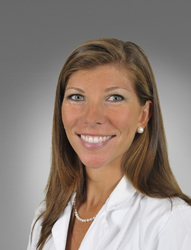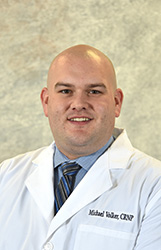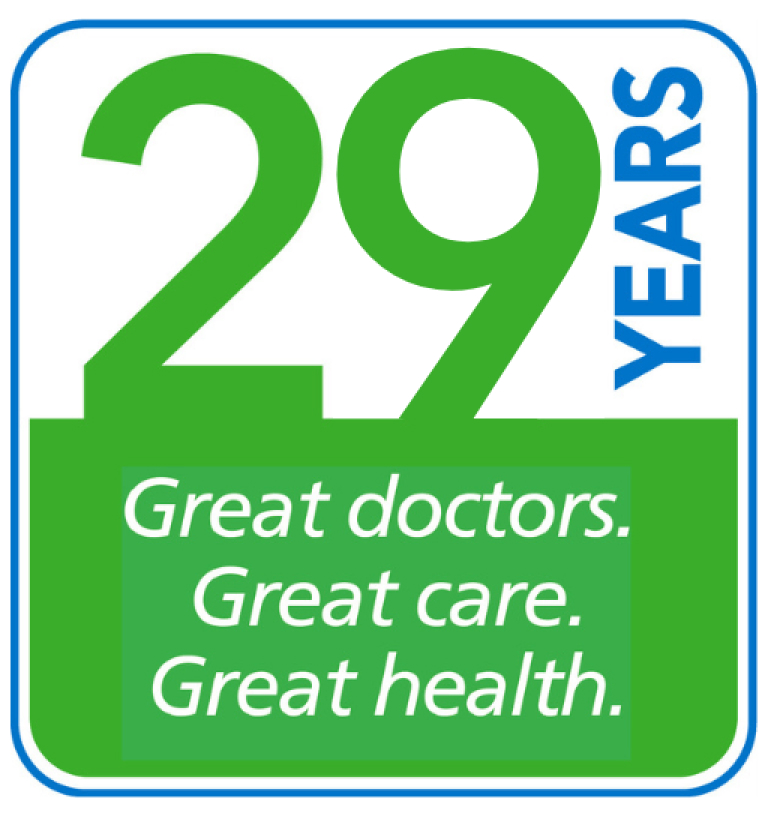Category Archives: Healthy Lifestyle
Are You Addicted to Social Media?
By: RAFEENA BACCHUS, M.D.
People are social by nature. We need the company of others, and the strength of our relationships affect our mental and physical health.
Today, many of us use social media platforms such as Facebook, Twitter, TikTok, YouTube and Instagram to connect with each other. Kids, teens, and young adults are the heaviest social media users, but most adults are also active on at least one platform.
For most of us, social media is an enjoyable way to pass time and connect with family and friends. However, some people say social media has a negative impact on their lives, but they continue to use it anyway. Their behavior seems to be out of control, causing some health professionals to say they are addicted to social media.
How social media addiction works
The process of using social media – posting and reacting to content — causes your brain to release the pleasure chemical dopamine. The more you use social media and receive the rewarding dopamine, the more your brain will want it. Over time, your brain can become dependent/addicted to the good feeling social media gives you.
Social media platforms like Facebook, TikTok, Twitter and YouTube also track your activity and customize your feed to show you posts you want to view and comment on. This makes social media more addictive in nature.
One of the signs of addiction is continuing to use something even after it has clearly had a negative impact on you. If social media use is interfering with your relationships, self-esteem, work or school, but you can’t stop using it, that is a possible sign of addiction.
Signs you may have a social media addiction
If you have several of the behaviors below, it may be a sign that your social media use is getting out of hand.
- You log in very often, wasting time with unproductive browsing. You check social media first thing in the morning and repeatedly through the day.
- You constantly check your notifications and update your status.
- You use social media to escape from the real world. If stress and discomfort in your life are getting to you, you seek refuge in the virtual community.
- If you can’t get on social media, you get agitated. You become anxious over time spent away from your device or without an internet connection.
- You plan your social media posts in advance. You go places just to take selfies there, and get distracted during daily activities by thinking about how you plan to describe them later on social media.
- You get upset when your posts online aren’t appreciated.
- Social media gets in the way of your real-life connections. You make choices that cut out friends and family and replace them with avatars and status updates.
Health risks of social media addiction
People who habitually and excessively use social media can suffer mental and physical effects.
- You may unfavorably compare yourself to people online, causing you low self-esteem.
- Seeing others have a good time may contribute to a greater sense of loneliness, isolation, and the fear of being left out.
- Exposure to misinformation, especially false health news, can keep you from getting the medical care you need or persuade you to try unsafe products and treatments.
- Dealing with negative people, trolls and bullies can make you anxious and depressed.
- Checking your feed late at night/during the night can disrupt your sleep patterns, affecting your performance at work or school.
- Hours of screen time means less physical activity, which may lower your overall health.
- Being obsessed with online people can make you ignore the important relationships in your life.
- Motivated by the desire for online approval, you may engage in risky behavior, such as playing dangerous pranks or posting embarrassing material. And if you glance at your news feed while driving, you are up to four times more likely to be involved in a crash.
How to cut back on social media
If you think social media is becoming a problem, you may need to cut back to reach a healthy level of use. Try the helpful tips below, but if you still struggle, consult with your healthcare provider for additional resources.
- Turn off notifications from social media apps. They are a major source of distraction and temptation.
- Change the desktop color settings of your phone to black and white to make them less attractive.
- Silence your phone during work, as well as during school, meals, and recreational activities.
- Delete social media apps from your phone to decrease the amount of time spent on them. (You can still use them on your computer at home.)
- Set aside a certain amount of time for social media each day. Don’t go beyond it.
- Turn on a timer to help keep you accountable for how much time you spend online.
- Leave your phone, tablet, and computer out of your bedroom.
- See your friends and family in person more often.
- Take up a new hobby that’s not technology-related like sports, art, or classes.
 Dr. Rafeena Bacchus sees patients at MPCP’s Columbia office. She received her medical degree from SUNY at the Buffalo School of Medicine and completed her residency program in Internal Medicine at the University of Maryland. She is certified by the American Board of Internal Medicine.
Dr. Rafeena Bacchus sees patients at MPCP’s Columbia office. She received her medical degree from SUNY at the Buffalo School of Medicine and completed her residency program in Internal Medicine at the University of Maryland. She is certified by the American Board of Internal Medicine.
The ‘Miracle Drug’ for Everyone
By: JOSE ZARZUELA, M.D.
Suppose there was a miracle drug that could boost your mood and energy, reduce your weight, prevent serious illness, and even help you sleep better. Would you take it?
Good news: The miracle drug is real. It’s called exercise.
Your body needs regular physical activity to work right and feel good. People who are active tend to have fewer health problems. But people who spend most of their time just sitting weaken their bodies. And if a sedentary lifestyle is compounded with overeating, smoking, and too much alcohol, you greatly increase your risk for heart disease, high blood pressure, diabetes, and other serious issues.
More good news: You don’t have to spend hours at the gym. Something as simple as a brisk daily walk gives you physical and emotional benefits. When you head out for a walk, or any other type of moderate exercise:
• Your heart pumps more oxygen throughout your body. This helps lower your risk of heart diseases such as high cholesterol, coronary artery disease, and heart attack.
• Your body releases immune cells that find and destroy dangerous intruders (such as viruses) and defective cells (that can cause disease).
• Your brain produces more dopamine, a chemical that improves your mood and makes you feel more relaxed.
Regular exercise strengthens your heart, muscles, and bones, leading to overall better health. It also provides these other benefits:
• Increased ability to focus, as well as better memory and decision-making.
• Better moods: Increased levels of dopamine produce a greater sense of well-being, as well as reducing anxiety and worry.
• Improved sleep. Exercise can help you to fall asleep faster and stay asleep longer.
Sound good so far? It gets better
• Exercise helps you manage your weight or lose pounds. It causes your body to burn more calories, and the more you burn the easier it is to control your weight.
• Helps your body manage blood sugar and insulin levels. Exercise can lower your blood sugar level and make your insulin work better. This can cut down your risk for type 2 diabetes, or if you already have it, exercise can help you manage it.
• Reduces your risk of some cancers. Studies show that regular physical activity can lower the risk of colon cancer 17%-30% and breast cancer risk 20%-30%.
How to get started
It doesn’t take much exercise to start boosting your health. Even small changes can help. You can take the stairs instead of the elevator. Walk down the hall to a coworker’s office instead of sending an email. Wash the car yourself. Park further away from your destination.
For most people, your goal should be to work up to at least 150 minutes per week of moderate intensity exercise, like a brisk walk. You could split that into 30 minutes a day, five days a week.
The resources below can help you get started. And if you haven’t been active for a while, it’s a good idea to consult with your health provider first.
• 10-Minute Workout (video)
• How to Start a Walking Program
• Ways to Exercise If You Hate to Work Out
 Dr. Zarzuela is a Maryland Primary Care Physicians partner and is certified by the National Board of Physicians and Surgeons for Internal Medicine and Sports Medicine. He sees patients in MPCP’s Pasadena office.
Dr. Zarzuela is a Maryland Primary Care Physicians partner and is certified by the National Board of Physicians and Surgeons for Internal Medicine and Sports Medicine. He sees patients in MPCP’s Pasadena office.
Will My Child Be Safe at School?
BY: ANDREA C. CUNIFF, M.D.
Maryland children are finally returning to the classroom. This is welcome news for most families, but some parents wonder whether their kids will be safe from COVID-19 at school.
Maryland schools are taking precautions to protect children and staff members, including social distancing, mask wearing, limited class size and stepped-up cleaning. So as reported in Maryland School Reopening Guidance from the Maryland Department of Education, schools are pretty safe when it comes to the coronavirus. Here are some highlights from the report:
-
- Many fewer children have been infected with COVID-19 than adults.
- Children are less likely to become infected than adults.
- Children under 10 appear to not spread the virus as much as adults.
- Children generally have milder cases of the disease and lower rates of hospitalization.
- Spread of the virus in schools is uncommon when prevention strategies are used effectively.
- When Covid-19 does spread in schools, it is much more likely to be between staff members than between staff and children.
- From Aug. 10, 2020 to Jan. 10, 2021, only 4.3% of persons 19 years or younger who got COVID-19 said they had attended or visited in a pre-K-12 school. That means most were not infected at school.
- Maryland has prioritized vaccination of educators and staff in all K-12 schools. This is underway now.
See public and non-public K-12 schools that have reported Covid-19 cases
While schools are taking precautions, you should remind your children to protect themselves with these safe practices:
- Stay separated (at least three feet, according to the latest CDC guidance): This includes not bunching up while standing in line, leaving space between seats at lunch, and not getting too close to others at recess.
- Wear face masks: This should be a priority, especially when it’s hard to maintain social distance, such as on the bus or entering the school building. Wear cloth masks or the disposable medical face masks that are now widely available at grocery and drug stores.
- Give your child a clean mask and back-up mask each day and a clean, resealable bag for them to store the mask when they can’t wear it, such as at lunch.
- Keep hands clean: Practice hand-washing at home with your child: soap and water for at least 20 seconds. Encourage them to wash before and after eating or after coughing/sneezing. If hand washing isn’t available, use hand sanitizer.
- Stay home if sick: Children should stay home if they have tested positive or are showing any COVID-19 symptoms:
- Fever or chills
- Cough
- Shortness of breath or difficulty breathing
- Fatigue
- Muscle or body aches
- Headache
- Loss of taste or smell
- Sore throat
- Congestion or runny nose
- Nausea or vomiting
- Diarrhea
 Dr. Andrea C. Cuniff earned her medical degree at the University of Maryland School of Medicine and is certified by the American Board of Family Medicine. She sees patients in the Annapolis office.
Dr. Andrea C. Cuniff earned her medical degree at the University of Maryland School of Medicine and is certified by the American Board of Family Medicine. She sees patients in the Annapolis office.
A Good Night’s Sleep in Anxious Times
By: Michael Volker, CRNP
During office visits, it’s not unusual for patients to tell me they’re experiencing stress and anxiety due to the pandemic, and it’s spoiling their sleep. This is normal, I tell them: COVID-19 messes with our lives in many ways, including our ability to sleep well.
Getting a good night’s sleep is more important than ever in these troubled times. If you’re well rested, you lower your risk of getting sick, reduce stress and depression, and generally feel better.
Here are some tips I give my patients who are having trouble sleeping. They’re designed to put your mind at ease so you can get restful, healthful sleep.
Understand what makes you anxious
Think about why your anxiety is bad at bedtime and what you can do to ease it. Do you watch TV news at night? Spend time on social media? Worry that you’re going to get the virus? All these can raise your anxiety level and increase sleeplessness. While it’s impossible to shut off all worry, it helps to avoid things that make you anxious, especially at bedtime.
Exercise during the day
Moderate exercise for at least 30 minutes five or more days a week can help you relax and fall into a deep sleep. Moderate exercise could be a brisk walk where you can still carry on a conversation. Vigorous exercise, like running, is also good, but do it at least two hours before going to bed.
Limit nap time
Long daytime naps can interfere with nighttime sleep. If you do nap, limit yourself to 30 minutes and avoid napping late in the day.
Avoid alcohol and caffeine
Both of these can mess up your natural sleep rhythms and cause wakefulness. Stop drinking alcohol at least two hours before bed, and try not to drink caffeinated beverages after 2 p.m.
Instead, try herbal teas in the evening to relax and unwind. Popular choices include chamomile and lavender, available in many stores.
Develop a bedtime routine
Having a regular bedtime routine tells your mind and body it’s time to slow down and prepare for sleep. Tailor your routine to your own needs, but it could include:
- Keep to a sleep schedule. A regular bedtime helps maintain your body’s internal clock.
- Prepare your bedroom. At night, you want a dark, quiet and cool room to fall asleep. Try adjusting your thermostat to a lower temperature, changing to cotton or bamboo linens, or taking a shower/bath before bed.
- Wash your sheets regularly. Clean linens can also help you fall asleep faster.
- Quiet your mind. Before you go to bed, empty your worries and anxieties. For example, write down what you have to do the next day and then put it in a drawer. Or write down your anxious thoughts, then crumple the paper and throw it away to let your worries go.
- Turn off your TV, phone and other electronics at least one hour before bed. Using devices in the bedroom leads to higher insomnia, a later wake-up time, shorter sleep duration, and greater fatigue. If you are watching TV or using your phone at night time, turn on the blue light filter or wear blue light filtering glasses.
- Find relaxing bedtime activities. Calm your mind by reading a book, listening to soothing music, deep breathing, or meditating.
Try melatonin instead of sleeping pills
Melatonin is a hormone in your body that plays a role in sleep. It is available as a supplement, which some people take to help them fall asleep. Melatonin is not habit forming. Try to avoid other night time medications, such as Tylenol PM or Advil PM. These contain diphenhydramine (Benadryl). Usually they only help you fall asleep and do not promote restful sleep, and diphenhydramine can also become habit forming.
If you wake up
If worry makes you wake up in the middle of the night, try this:
- Don’t lie there, get out of bed.
- Remove yourself from the bedroom or sit in a chair in the bedroom.
- Do screen-free activities to get sleepy again.
Know when to contact your doctor
During this time of COVID-19, nearly everyone has an occasional sleepless night, but if your sleeplessness continues, contact your MPCP provider. We can help you identify and treat any underlying causes that may be keeping you from a good night’s sleep.
More resources for you:
9 Resources for Coping with Coronavirus Anxiety, Healthline
9 Tips for A Good Night’s Sleep, Psych Central
 Michael Volker, Certified Registered Nurse Practitioner, received his B.S. in Nursing degree from University of Maryland Baltimore School of Nursing and his M.S. in Nursing degree from Walden University, Minneapolis, Minnesota. Mr. Volker is certified by the American Academy of Nurse Practitioners. He sees patients in the Arundel Mills office.
Michael Volker, Certified Registered Nurse Practitioner, received his B.S. in Nursing degree from University of Maryland Baltimore School of Nursing and his M.S. in Nursing degree from Walden University, Minneapolis, Minnesota. Mr. Volker is certified by the American Academy of Nurse Practitioners. He sees patients in the Arundel Mills office.



